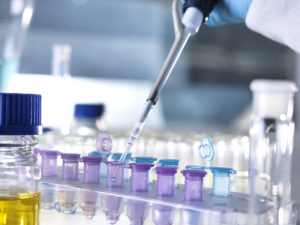Further improved peptide tag technology: SpyTag and SpyCatcher version 3

Bioconjugation, a strategy to form covalent links between biomolecules, is useful for the study and manipulation of protein properties. Peptide interaction can be exploited to form powerful tools for bioconjugation. By taking advantage of the characteristics of bacterial pilins and adhesins, Oxford researchers have developed SpyTag and SpyCatcher, which are a peptide/protein pair that acts as a ‘superglue’ for proteins. SpyTag and SpyCatcher spontaneously form an irreversible covalent link across a wide range of experimental conditions. They have been used extensively in academic and industrial settings for diverse purposes, such as enzyme stabilisation, vaccine assembly and formation of novel biomaterials, but have previously been limited by a slow rate of reaction.
The same Oxford Researchers have improved this technology, producing SpyTag and SpyCatcher version 3.0. A series of mutations in SpyTag and SpyCatcher have increased the reaction rate by more than two orders of magnitude, whilst retaining all the advantageous features of their predecessors.
Peptide tags
Peptide tags are convenient tools for protein analysis and modification due to their small size, which minimises any change to protein functionality. The small interaction surface between a peptide and its associating protein partner results in a lack of affinity. Protein engineers have come up with a solution: adapting natural proteins forming covalent bonds to design stronger peptide tags. SpyTag and SpyCatcher are a peptide/protein pair adapted from an adhesin of Streptococcus pyogenes by a group of Oxford researchers.
SpyTag and SpyCatcher version 3
The same group has now designed SpyTag version 3 and SpyCatcher version 3, which significantly improves on the performance of previous technology, whilst retaining all the benefits of their predecessors. They continue to work in a wide-range of conditions, including different pHs, temperatures and in the presence of detergent, whilst displaying the same thermostability as Version 2. However, Version 3 exhibits a 10-fold increase in the rate of reaction compared to Version 2 and a 100-fold increase compared to the original SpyTag and SpyCatcher technology.
Use of the technology
SpyTag and SpyCatcher version 3 can be used for a variety of purposes:
- Targeting fluorescent or other biophysical probes to specific proteins
- Western Blotting
- Pull-down of proteins or protein-nucleic acid complexes (CLIP, ChIP)
- Protein immobilisation for proteomics
- Conjugation of proteins to virus-like particles, viruses, bacteria or multimerisation scaffolds for vaccination or therapeutic targeting
- Increasing enzyme resilience
- Linking multiple enzymes into pathways to promote metabolic efficiency
- Solid-phase polyprotein synthesis which can activate multiple signalling pathways e.g. for controlling stem cell differentiation
Commercialisation
Oxford University innovation has filed a priority patent application on the technology and welcomes discussions with companies interested in licensing it for commercial development.
about this technology

